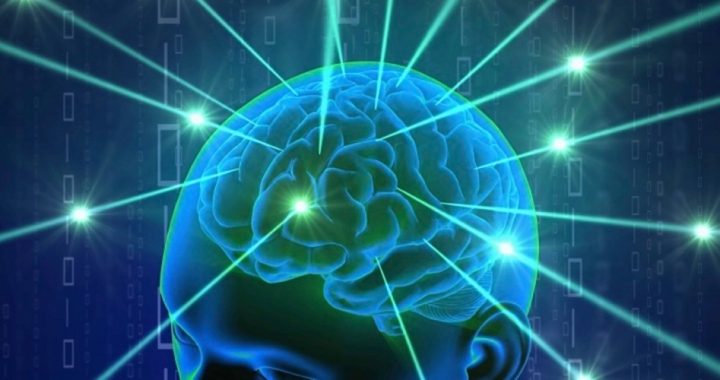
The Pentagon’s research arm — the Defense Advanced Research Projects Agency, or DARPA — just received $65 million from American taxpayers to develop a way to plug a human brain directly into a computer. According to an announcement by DARPA, the project will create a way to “enable rich two-way communication with the brain at a scale that will help deepen our understanding of that organ’s underlying biology, complexity, and function.” If successful, the Neural Engineering System Design (NESD) will give the Pentagon power to “support potential future therapies for sensory restoration.”
In other words, the federal government is taking money from taxpayers and using it to build a way to manipulate their brains, altering their senses — “vision, hearing, and speech” — in whatever way the feds deem beneficial. One of the first steps, DARPA reports, will be to create “an implantable package.” That is to say, a device that can be put directly into the brains of those selected for the sensory rewiring. One of the proposed interfaces will result in the development of “up to 100,000 untethered, submillimeter-sized ‘neurograin’ sensors implanted onto or into the cerebral cortex.” Yikes.
Once the device is implanted in the brain of the subject, the military could use a “relay station transceiver worn on the head” to “wirelessly power and communicate with the implanted device.” Yikes.
But wait, there’s more!
DARPA reports that a team working at the University of California-Berkley is attempting “to create quantitative encoding models to predict the responses of neurons to external visual and tactile stimuli, and then apply those predictions to structure photo-stimulation patterns that elicit sensory percepts in the visual or somatosensory cortices, where the device could replace lost vision or serve as a brain-machine interface for control of an artificial limb.”
“Predict the responses of neurons.” In other words, the person with the Pentagon-powered brain will send messages to the controllers alerting them to thoughts or actions about to percolate to the person’s conscious mind.
Academics have come out in support of the scheme: A paper entitled “The Brain Activity Map Project and the Challenge of Functional Connectomics” includes predictions of the development of “techniques for wireless, noninvasive readout of the activity of neuronal populations.” In simpler terms, this research would allow those in control of the discoveries gleaned from this program to wirelessly access and control the brains of target populations.
Consider this excerpt from the academic study, as well: “This emergent level of understanding could also enable accurate diagnosis and restoration of normal patterns of activity to injured or diseased brains, foster the development of broader biomedical and environmental applications, and even potentially generate a host of associated economic benefits.” “Restoration of normal patterns” takes on an eery aspect when viewed in concert with the DARPA connection.
As revealed in the academic study, the NESD is part of a broader plan to give the Pentagon power over the mind, a plan called the BRAIN Initiative — short for Brain Research through Advancing Innovative Neurotechnologies. Development of such mind-control technologies is certainly consistent with DARPA’s recent efforts to speed of the growth of the surveillance state and the increasing sophistication of the tools used to build it.
At The New American we have chronicled the various projects sponsored by the über-secret research and development arm of the military. One of the numerous technologies being pursued by DARPA will not only widen the field of vision of government’s never-blinking eye, but it purports to predict the behavior of those being watched.
Forbes reported that DARPA has contracted with scientists at Carnegie Mellon University to develop “an artificial intelligence system that can watch and predict what a person will ‘likely’ do in the future using specially programmed software designed to analyze various real-time video surveillance feeds. The system can automatically identify and notify officials if it recognized that an action is not permitted, detecting what is described as anomalous behaviors.” Deployment of the devices is anticipated at “airports and bus stations,” but there is little doubt that should these predictive monitors prove successful, they will be installed right there next to the red light cameras already mounted at nearly every intersection in America. Minority Report, anyone?
With millions of tax dollars deposited by BRAIN into its research coffers, DARPA can begin planning to identify brain activity typical of those who could potentially pose a threat to national security. Such people could be eliminated by being brought into a federal government lab run by the National Institutes of Health and having their “diseased” brain healed and brought back into “normal” function.
In its announcement, DARPA names “Detection and Computational Analysis of Psychological Signals (DCAPS)” as one of its primary areas of emphasis in its BRAIN activity. A separate entry on another part of the DARPA website reveals more about DCAPS and how it could be used:
DCAPS tools will be developed to analyze patterns in everyday behaviors to detect subtle changes associated with post-traumatic stress disorder, depression and suicidal ideation. In particular, DCAPS hopes to advance the state-of-the-art in extraction and analysis of “honest signals” from a wide variety of sensory data inherent in daily social interactions. DCAPS is not aimed at providing an exact diagnosis, but at providing a general metric of psychological health.
DCAPS also aims to develop novel algorithms for detecting distress cues from users who opt in to provide data such as text and voice communications, daily patterns of sleeping, eating, social interactions and online behaviors, and nonverbal cues such as facial expression, posture and body movement. The outcomes of these analytical algorithms would be correlated with distress markers from neurological sensors for improved understanding of distress cues.
There is legitimate reason to oppose the NESD and the entire BRAIN Initiative. As has been demonstrated, Washington considers patriots “home-grown terrorists,” and there is little doubt that any technologies developed by grants from the Pentagon’s efforts to directly control the minds of veterans and other Americans could eventually be used to identify those with tendencies toward suspect thoughts and to use the map of the brain to re-program patriots and eliminate the threat they are accused of posing to national security.



